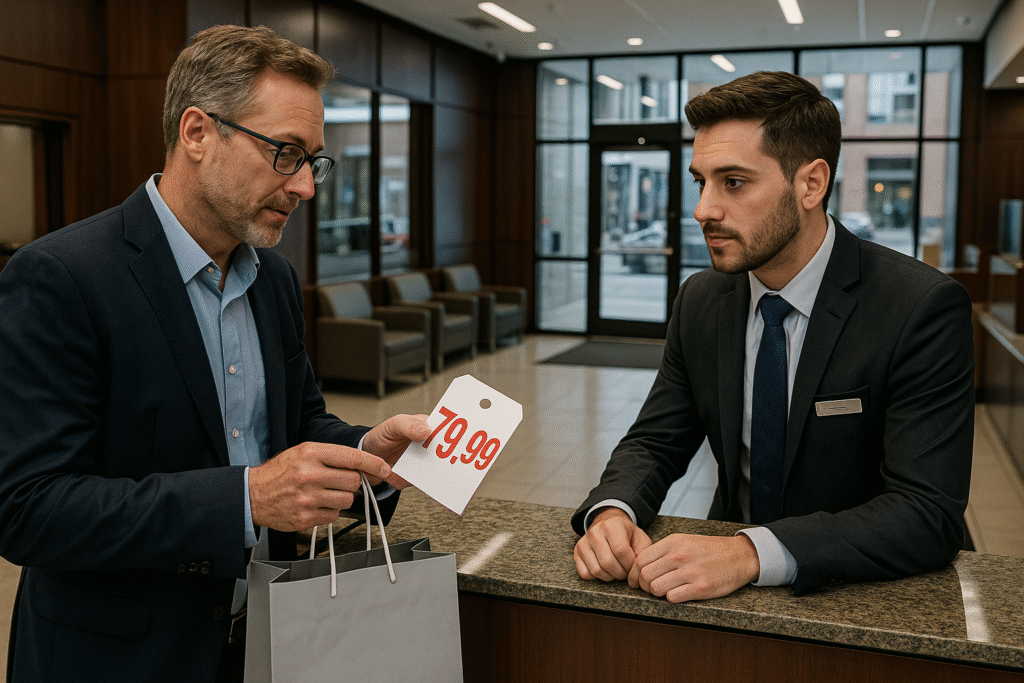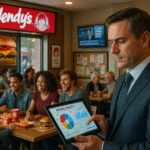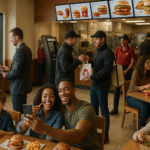1. Making Bank Positioning Strategies Tangible
Question:
When banks make their positioning strategies tangible through the ________ dimension, they ensure the exterior and interior are well-designed, desks are laid out strategically, and waiting times are minimized.
Correct Answer: Place
Detailed Explanation & Example:
In marketing, the “place” refers to the physical environment where a service is delivered. For banks, this includes branch design, location, accessibility, and in-branch experiences. For example, a modern bank branch might have open layouts, natural light, comfortable seating, and self-service kiosks to make the space inviting and efficient. The “place” becomes part of the brand promise—think of how Apple Stores are meticulously designed to reflect innovation and simplicity.
2. Impact of Branding on Product Evaluation
Question:
Consumers may evaluate identical products differently depending on how they are branded.
Correct Answer: True
Detailed Explanation & Example:
Branding shapes consumer perceptions. For instance, imagine two t-shirts manufactured in the same factory—one branded with Nike’s swoosh, the other generic. Many customers will perceive the Nike shirt as higher quality and be willing to pay more, even if the materials are identical. This effect is seen in countless markets: branded medicines vs. generics, Coca-Cola vs. store-brand cola, etc. Brands add psychological value beyond the physical product.
3. Financial Approach to Measuring Brand Equity
Question:
The ________ approach to measuring brand equity evaluates the net present value (NPV) of a brand’s future earnings.
Correct Answer: Financial
Detailed Explanation & Example:
The financial approach calculates what the brand is worth based on future cash flows, discounted to today’s value. For example, if Apple’s brand enables it to generate $10 billion more per year than a generic competitor, and you expect that to continue, the NPV of those extra profits is the financial value of Apple’s brand. This is crucial for mergers, acquisitions, or reporting intangible assets.
4. Examples of Fixed Costs
Question:
Rent, heat, interest, and salaries are examples of ________ costs.
Correct Answer: Fixed
Detailed Explanation & Example:
Fixed costs are business expenses that do not change with production or sales volume. Whether a company produces one widget or a million, rent and salaried employees’ wages stay the same. For example, Netflix pays for its servers and office space regardless of how many subscribers stream shows in a given month. Understanding fixed costs helps companies set prices and calculate break-even points.
5. Inseparability in Services
Question:
The fact that services are typically produced and consumed simultaneously is known as the ________ aspect of services.
Correct Answer: Inseparability
Detailed Explanation & Example:
Inseparability means that services are delivered and consumed at the same time. For instance, a haircut requires both the stylist and the customer to be present. The service can’t be stored for later or separated from the provider. This is different from goods like packaged foods, which are produced, stored, and sold later.
6. Branding Reduces Consumer Perceived Risk
Question:
Branding has the ability to reduce perceived risk for consumers.
Correct Answer: True
Detailed Explanation & Example:
Strong brands signal reliability and reduce buyer anxiety. For example, someone buying electronics from Sony feels safer than purchasing an unknown brand, because Sony’s reputation promises quality and after-sales support. Branding is especially important for high-involvement purchases like cars, laptops, or financial services.
7. Experience Qualities in Services
Question:
Services high in ________ qualities have characteristics the buyer can evaluate after purchase.
Correct Answer: Experience
Detailed Explanation & Example:
Experience qualities are attributes customers can only judge after the service is performed. Think of a meal at a new restaurant—you won’t know if it tastes good until you try it. This is different from search qualities (like color or size) that can be evaluated beforehand, or credence qualities (like medical treatment) that may be hard to evaluate even after consumption.
8. Reference Prices in Consumer Behavior
Question:
When consumers examine products, they often compare an observed price to an internal price they remember. This is known as a(n) ________ price.
Correct Answer: Reference
Detailed Explanation & Example:
A reference price is the “expected” price in the consumer’s mind. If you expect coffee to cost $3 and see it priced at $5, it feels expensive. Marketers use this concept to frame deals—showing a “regular price” next to a sale price makes the discount seem larger and more attractive.
9. Market Approach to Brand Equity
Question:
The ________ approach to measuring brand equity compares sales revenues from a branded offering against those of an identical unbranded offering.
Correct Answer: Market
Detailed Explanation & Example:
In the market approach, companies look at the actual sales difference between branded and unbranded products. For example, if “Tylenol” outsells generic acetaminophen at a higher price, the difference in revenue (adjusted for brand-building expenses) is the market value of the Tylenol brand.
10. Cost Approach to Brand Equity
Question:
The ________ approach to measuring brand equity examines the investment made in developing the brand.
Correct Answer: Cost
Detailed Explanation & Example:
This method adds up all the money spent on branding—advertising, design, legal fees, etc.—to estimate brand value. For example, the total cost Coca-Cola has spent building its brand globally (since 1886) would be the brand’s cost value. However, this approach doesn’t always reflect actual market value.
11. Types of Service Providers
Question:
Which of the following is true for services?
Correct Answer: Service providers can be either for-profit or nonprofit.
Detailed Explanation & Example:
Services are provided by a range of organizations. Hospitals, universities, charities (nonprofits) offer services just like airlines, hotels, or banks (for-profit). For example, the American Red Cross (nonprofit) and FedEx (for-profit) both provide essential services but have different objectives.
12. Intangibility of Services
Question:
Unlike physical products, services cannot be seen, tasted, felt, heard, or smelled before purchase. This is known as the ________ aspect of services.
Correct Answer: Intangibility
Detailed Explanation & Example:
Intangibility means you can’t try a service before buying. For example, you can’t “test drive” a dentist appointment. That’s why service businesses focus on reputation, reviews, or tangible cues (like uniforms, décor) to build trust.
13. Services Do Not Result in Ownership
Question:
Which of the following is a characteristic of a service?
Correct Answer: The service does not result in the ownership of anything.
Detailed Explanation & Example:
When you buy a ticket to a concert, you get an experience—not a physical product to own. The same is true for legal advice, a haircut, or cloud storage: you pay for access, not for possession.
14. Price Elasticity of Demand
Question:
________ reflects the degree to which a change in price leads to a change in quantity sold.
Correct Answer: Price elasticity of demand
Detailed Explanation & Example:
This measures how sensitive consumers are to price changes. If pizza prices rise 10% and sales drop 20%, pizza is highly elastic. Gasoline is less elastic; people still buy even if prices go up, because they need it for commuting.
15. Avoiding Feature Fatigue
Question:
To avoid “feature fatigue,” companies must be careful to prioritize those features that are included and find unobtrusive ways to provide information about how consumers can use and benefit from the feature.
Correct Answer: True
Detailed Explanation & Example:
Feature fatigue happens when products have too many functions, overwhelming users. For example, TV remotes with dozens of buttons often confuse people. Apple is famous for avoiding this by focusing on simplicity, offering clear tutorials, and hiding advanced features until needed.
16. Perishability of Services
Question:
Jake had an appointment at the doctor’s office, but missed it. The doctor had to move on to the next patient. This illustrates the ________ of services.
Correct Answer: Perishability
Detailed Explanation & Example:
Services cannot be stored or saved. An unsold airline seat on a flight, or an empty hotel room for a night, is revenue lost forever. This makes demand management (like happy hour discounts) critical for service industries.
17. Increasing Nonpeak Demand
Question:
Which is an example of a service provider trying to increase nonpeak demand?
Correct Answer: A fine dining restaurant promoting breakfast service.
Detailed Explanation & Example:
Restaurants are typically busy at lunch and dinner, but empty in the morning. By offering breakfast, they attract more customers during slow periods. Gyms may offer discounted memberships for midday use, or theme parks may offer lower prices in the off-season.
18. Price as a Revenue Producer
Question:
Price is one of the two elements of the marketing mix that produces revenue.
Correct Answer: True
Detailed Explanation & Example:
Of the 4Ps (product, place, promotion, price), only price directly generates money. The others represent costs. For example, a store may spend on advertising and building maintenance (promotion, place), but revenue only comes when customers actually buy (price).
19. Differentiation Through Branding
Question:
A commodity offering that can’t be differentiated by product or service can still stand out through ________.
Correct Answer: Branding
Detailed Explanation & Example:
Bottled water is water—but brands like Evian or Fiji command premium prices because of branding. Even salt, sugar, and flour have branded options that people pay more for because of perceived quality, status, or values.
20. Pricing Cues in Marketing
Question:
________—visual, verbal, and numerical indicators that convey information about price—are an important part of the psychology of pricing.
Correct Answer: Pricing cues
Detailed Explanation & Example:
Pricing cues include sale tags, “$19.99” prices, “50% OFF” banners, or even high-quality packaging. Retailers use these to influence perceptions of value or urgency. For instance, “limited time offer” signs make people feel they need to buy now.
Conclusion: Understanding Marketing Fundamentals
These detailed explanations and examples will help you ace your MKTG640 exam, apply marketing concepts at work, and understand the “why” behind every right answer. The key to mastering marketing is not just memorizing terms but seeing how they play out in the real world.
Bookmark this post for exam prep, share it with classmates, and comment below with any questions!
SEO Keywords Used:
marketing concepts explained, MKTG640 quiz answers, brand equity example, pricing strategy in marketing, service characteristics examples, what is price elasticity, intangibility in services, fixed costs example, experience qualities in services, reference price marketing, market approach brand equity, cost approach branding, types of service providers, perishability of services, nonpeak demand example, differentiation through branding, pricing cues marketing, Kotler marketing concepts, marketing mix revenue, marketing fundamentals for students
References:
- Kotler, P., & Keller, K. L. (2016). Marketing Management (16th Ed.). Pearson.


